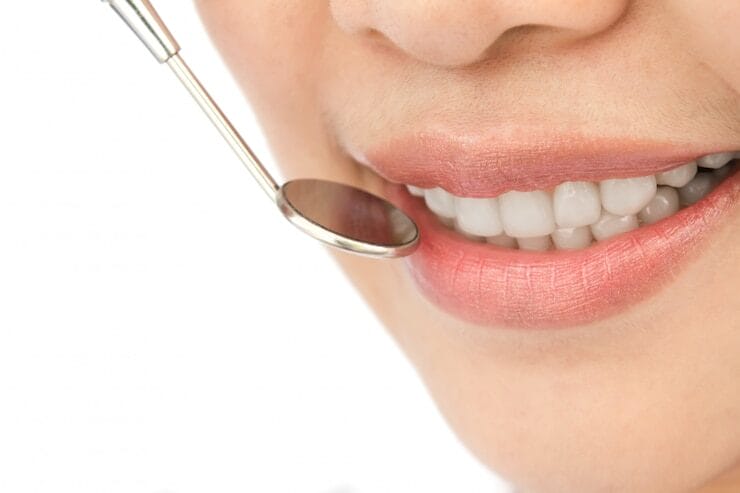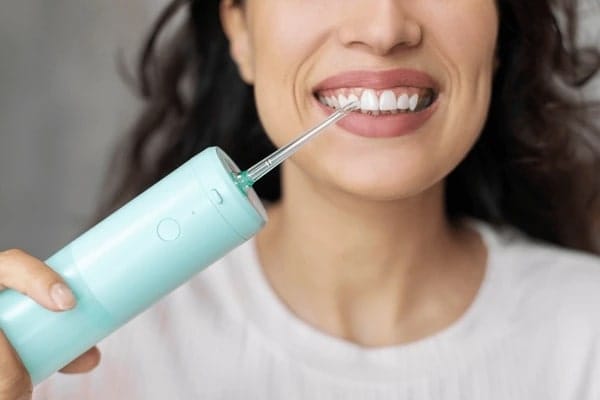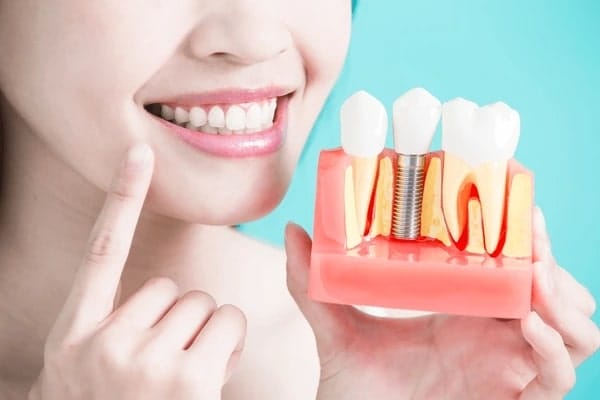A chipped tooth can be more than just a cosmetic concern. Whether caused by an accidental bump, biting into something hard, or simply the natural wear and tear of time, the damage can affect both the function and appearance of your smile. Fortunately, modern dentistry offers effective solutions for treating chipped teeth, such as crowns and veneers. But when is it necessary to cap a chipped tooth, and how do you choose between crowns and veneers? This article will explore both options, outlining their benefits, procedures, and how to determine which one is right for you.
What Is a Chipped Tooth and How Can It Be Treated?
A chipped tooth occurs when part of the tooth’s enamel is broken off. This can happen to any tooth, but the front teeth are particularly vulnerable to chips, as they are more exposed to direct force. A minor chip might only cause slight cosmetic concern, while a larger chip could lead to sensitivity or even pain. How you treat a chipped tooth depends largely on the size of the chip, the tooth’s location, and your specific dental needs.
There are several ways to treat a chipped tooth, ranging from simple cosmetic fixes to more complex restorations. Among the most common solutions are dental crowns and veneers. Both options are effective, but they serve slightly different purposes.
What Is a Dental Crown and How Does It Help a Chipped Tooth?
A dental crown is a tooth-shaped cap that is placed over a damaged or decayed tooth. It restores the tooth’s shape, size, and function, providing full coverage and protection. Crowns are ideal for severe chips or cracks that affect the tooth’s structure. A crown completely encases the damaged tooth, making it stronger and more durable.
Benefits of Dental Crowns:
- Full Coverage: Crowns are suitable for larger chips and provide full coverage of the tooth.
- Durability: Crowns, particularly those made from porcelain or ceramic, are highly durable and can last for years.
- Protection: Crowns protect the tooth from further damage, which is essential if the tooth is already weakened.
- Functionality: Crowns restore the functionality of a chipped tooth, making it easier to bite and chew.
Crowns are typically made from materials like porcelain, ceramic, or metal. The choice of material depends on the tooth’s location and the desired aesthetic outcome. Porcelain crowns are popular for front teeth because they blend well with natural tooth colour.
When Should You Opt for a Dental Veneer?
Porcelain veneers are thin, custom-made shells of tooth-coloured materials that are bonded to the front surface of a tooth. Unlike crowns, which cover the entire tooth, veneers are only applied to the visible portion, making them ideal for minor cosmetic repairs. Veneers are most commonly used for teeth with smaller chips, cracks, or stains.
Benefits of Porcelain Veneers:
- Aesthetic Appeal: Veneers are perfect for improving the appearance of your smile by correcting chips and other imperfections.
- Minimally Invasive: Veneers require less tooth preparation compared to crowns. Only a thin layer of enamel needs to be removed.
- Quick Procedure: Getting veneers typically takes one or two visits, making it a faster option than crowns.
- Natural Look: Porcelain veneers mimic the appearance of natural teeth, providing a seamless and aesthetically pleasing result.
Veneers are a great option if you’re primarily concerned with the appearance of a chipped tooth rather than its function. However, they may not be suitable for more extensive damage.
Crowns vs Veneers: Which One Is Right for Your Chipped Tooth?
Choosing between a crown or a veneer depends on the severity of the chip, your aesthetic goals, and the functionality of the tooth. Below is a comparison of the two options to help you determine which treatment is best for you:
| Factor | Dental Crown | Porcelain Veneer |
| Best for | Extensive damage, large chips | Minor chips, cracks, and cosmetic issues |
| Coverage | Covers entire tooth | Covers only the front of the tooth |
| Procedure Time | Multiple visits (usually 2-3) | Usually one or two visits |
| Durability | Long-lasting (10-15 years) | Moderate (7-10 years) |
| Cost | Generally higher | Generally lower |
| Aesthetic Outcome | Very natural, especially with porcelain | Highly aesthetic, especially for front teeth |
| Tooth Structure | More tooth structure may need to be removed | Requires minimal tooth preparation |
| Functionality | Restores full functionality | Primarily cosmetic |
When Should You Choose a Crown Over a Veneer?
If your chipped tooth has been weakened significantly and affects its functionality—such as when the chip extends deep into the tooth or reaches the nerve—a dental crown is the best solution. Crowns offer full protection and restore the tooth’s integrity, preventing further fractures or decay. Additionally, if the chip is large and in a back tooth, where appearance is less important than functionality, a crown may be the preferred option.
When Should You Choose a Veneer Over a Crown?
For minor chips, cracks, or cosmetic issues, porcelain veneers are often the ideal solution. Veneers are less invasive and offer a quicker, more affordable fix for teeth that are aesthetically damaged but structurally intact. Veneers are most commonly used for front teeth, where appearance is the primary concern. If you are looking for a simple, non-invasive option that enhances the look of your smile, veneers might be the best choice.
The Procedure for Getting Crowns or Veneers
Dental Crown Procedure:
- Consultation: Your dentist will assess the severity of the chip and take X-rays to ensure that the tooth is not infected.
- Tooth Preparation: The dentist will remove any decayed or damaged parts of the tooth, shaping it to accommodate the crown.
- Impressions: Impressions of your tooth will be taken to create a custom crown.
- Fitting and Cementing: The permanent crown will be placed over the prepared tooth and cemented in place.
Porcelain Veneer Procedure:
- Consultation: Your dentist will evaluate the chipped tooth and discuss the desired outcome.
- Tooth Preparation: A small amount of enamel is removed from the front of the tooth to ensure a proper fit for the veneer.
- Impressions: The dentist will take impressions of your tooth to create a custom veneer.
- Bonding: The veneer is bonded to the front of your tooth, and any excess material is removed.
How to Care for Your Crown or Veneer
Both crowns and veneers require good oral hygiene to ensure their longevity. It’s important to brush and floss regularly, avoid chewing on hard objects, and schedule regular dental checkups. For crowns, avoid sticky foods that may loosen the restoration. For veneers, avoid excessive force to prevent cracking or chipping.
Why Choose Palm Beach Dental for Your Chipped Tooth Treatment?
If you’re dealing with a chipped tooth and are considering crowns or veneers, Palm Beach Dental is here to help you restore your smile with the most advanced, effective treatments. Our experienced team of dental professionals will assess your specific needs and help you decide whether a crown or veneer is the right option for you. We use state-of-the-art technology to ensure precision and comfort throughout the treatment process. Whether you’re looking to improve the function of your tooth or enhance its appearance, Palm Beach Dental offers personalised care tailored to your goals.
Important FAQs
- What is the difference between crowns and veneers?
Crowns cover the entire tooth, providing full protection and restoring its functionality, while veneers are thin shells applied only to the front of the tooth for cosmetic purposes. - How long do crowns and veneers last?
Crowns can last 10-15 years, while veneers typically last 7-10 years, depending on the material and care. - Can a chipped tooth be repaired without a crown or veneer?
In some cases, smaller chips can be repaired with dental bonding or fillings. Crowns and veneers are reserved for more significant damage. - Are veneers suitable for back teeth?
Veneers are primarily used for front teeth, where appearance is a concern. For back teeth, crowns are typically recommended for better functionality and protection. - Is the procedure for crowns painful?
The procedure for crowns is usually not painful, as local anaesthesia is used to numb the area. After the procedure, there may be some sensitivity, but this should subside. - How do I know if I need a crown or veneer for my chipped tooth?
If your chip is large or affects the tooth’s functionality, a crown is the better option. For minor cosmetic issues, a veneer may be sufficient.
References:
- Australian Dental Association. (n.d.). Dental Crowns.
- Australian Dental Association. (n.d.). Porcelain Veneers.



